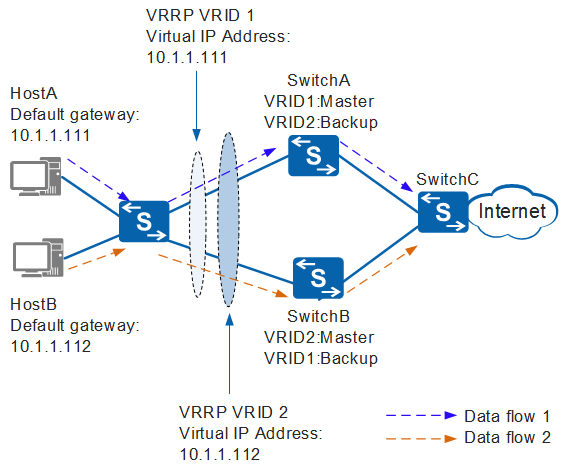VRRP Load Sharing
In load sharing mode, multiple devices transmit service traffic simultaneously. The load sharing mode requires two or more virtual routers. Each virtual router contains one master and multiple backups, and the master in each virtual router can be different.
VRRP redundancy and load sharing modes are similar in terms of implementation and packet negotiation processes. The load sharing mode differs from the redundancy mode in the following ways:
- Multiple VRRP groups need to be created, and the master in each VRRP group can be different.
- A VRRP device can join multiple VRRP groups and has different priorities in different VRRP groups.
As shown in Figure 1, two VRRP groups are configured:
- VRRP group 1: SwitchA functions as the master and SwitchB as the backup.
- VRRP group 2: SwitchB functions as the master and SwitchA as the backup.
VRRP groups 1 and 2 are gateways for different user hosts. The VRRP groups load balance traffic and back up each other.
